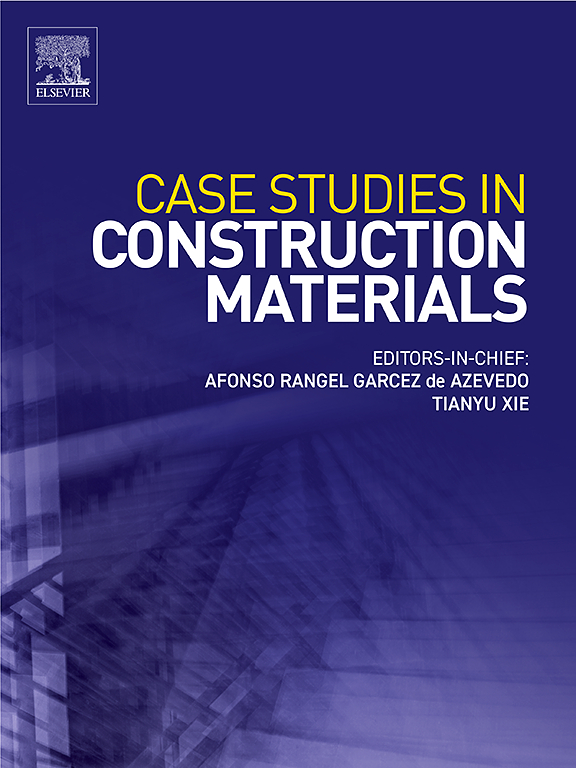钙基膨胀剂补偿高强混凝土自收缩的研究进展
IF 6.5
2区 工程技术
Q1 CONSTRUCTION & BUILDING TECHNOLOGY
引用次数: 0
摘要
本研究对钙基膨胀剂(CEAs)的收缩补偿机理、对(超)高强混凝土(HSC/UHSC)性能的影响以及应用该方法存在的问题进行了综合研究。分析表明,在一定条件下合理使用CEAs可以极大或完全抑制HSC/UHSC自收缩的发展,显著降低伴随开裂的风险。然而,研究发现CEAs的水化作用会影响其他粘结剂的水化过程,从而改变混凝土的微观结构。这反过来又导致抗压强度、抗弯强度和弹性模量的一定程度的降低,并且随着cea比例的增加,降低率增加。此外,当试图改善收缩补偿效果时,增加CEA的量存在HSC/UHSC延迟膨胀开裂的风险。膨胀机理、膨胀条件和抑制方法在现阶段还没有完全阐明。最后概述了近年来新提出的Ca-Mg复合ea,并对Ca-Mg复合ea在HSC/UHSC中的研究前景进行了展望。本文章由计算机程序翻译,如有差异,请以英文原文为准。
Research progress in the application of calcium-based expansive agents as compensation for autogenous shrinkage in high-strength concrete
In this study, comprehensive investigation of the shrinkage compensation mechanisms of calcium-based expansive agents (CEAs), their effects on the properties of (ultra) high-strength concrete (HSC/UHSC), and the existing problems in applying this methodology was conducted. Analyses showed that the rational use of CEAs under certain conditions could greatly or completely inhibit the development of autogenous shrinkage of HSC/UHSC, and significantly reduce the risk of associated cracking. However, it was found that the hydration of the CEAs affected the hydration process of other binders, thereby altering the microstructure of concrete. This was in turn observed to lead to a degree of decrease in compressive strength, flexure strength and elastic modulus, and the decrease rate increasing as with the rise in proportion of CEAs. Moreover, when attempting to improve the shrinkage compensation effects, increasing the amount of CEA presented a risk of delayed expansion cracking of HSC/UHSC. Neither the expansion mechanism, expansion conditions, nor the inhibition methods have yet been fully clarified in the current stage. Lastly, newly proposed Ca-Mg composite EAs were outlined, and the research prospects of Ca-Mg composite EAs in HSC/UHSC were explored.
求助全文
通过发布文献求助,成功后即可免费获取论文全文。
去求助
来源期刊

Case Studies in Construction Materials
Multiple-
CiteScore
7.60
自引率
19.40%
发文量
842
审稿时长
63 days
期刊介绍:
Case Studies in Construction Materials provides a forum for the rapid publication of short, structured Case Studies on construction materials. In addition, the journal also publishes related Short Communications, Full length research article and Comprehensive review papers (by invitation).
The journal will provide an essential compendium of case studies for practicing engineers, designers, researchers and other practitioners who are interested in all aspects construction materials. The journal will publish new and novel case studies, but will also provide a forum for the publication of high quality descriptions of classic construction material problems and solutions.
 求助内容:
求助内容: 应助结果提醒方式:
应助结果提醒方式:


